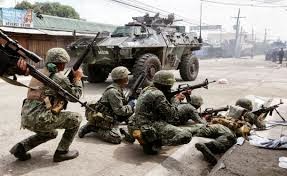The problem with society is that it responds quickly, but temporarily.
Security in malls tightens right after a robbery incident.
People rally along the streets upon hearing news about misappropriated funds.
Everyone participates in relief operations after a calamity strikes the country.
Yet, two months, or maybe even two weeks after these events occur, people again revert back to their regular habits as if nothing ever happened.
The forum about mangroves and beach forest greenbelts by the Philippine Native Plants Conservation Society, Inc. held last December 9, 2013 can be considered as an immediate response to the disaster that was typhoon Yolanda. Judging from the audience present in the auditorium that day, this forum had a wider scope, catering mostly to the older crowd instead of college students. I observed that many of them were also taking down notes and taking snapshots of the slideshow presentations of the speakers, and were able to ask intelligent questions that benefitted everyone present at the event.
The forum boasted exceptional speakers, who managed to keep the talk interesting even whilst tackling very technical topics and using uncommon terms. Prior to the forum, I used to think that plants were just plants, and mangroves were just mangroves. Little did I know that it took so much research and skill just to determine where and what type of plants to grow in each area. The speakers even showed detailed aerial images of the lands, and sketched out precisely where mangroves must be established in order to protect against typhoons and other calamities. I appreciated that they really did their best to communicate with the audience. In a forum like this, it is important that the speakers strive to be understood. Communication is everything, especially when the goal is to make people act and be moved by what one is saying.
Despite the knowledge that I gained that day, I left the forum feeling very disappointed. I found it sad that there were these people who had so much knowledge and ideas on how to better the country, yet seldom do these plans get put into action. What particularly saddened me was when Dr. Primavera mentioned that she had already been studying this for over 20 years. I could not fathom how easily translating this research into reality could have saved thousands of lives, and still, only a few people have listened. It may be ignorance, or sheer lack of care, but whatever it is, something must be done about this system. Although the lives in the past cannot be brought back, it is never too late to nourish mangrove rehabilitation. This can save thousands more in the future.
Nature really is such a wondrous thing, but it is equally terrifying because the environment is not a slave to mankind. The way society cares for its surroundings can determine a nation’s life or death. Sadly, in the case of Yolanda and other other calamities, it was the latter. Hopefully, the Philippine Native Plants Conservation Society, Inc., along with the speakers and other experts on plant life, can reach even more people and educate them. In this way, the immediate response can see long-term results and be able to prevent future tragedies from occurring through proper planning and the cooperation from people in various sectors of society. Let this not be another concern that people forget about in two months’ time. Restoring the mangroves to their ideal ratio is not something a handful of people can do on their own. Ultimately, people should work hand in hand in creating an environment that will be fit to house this nation’s children, and along with this, cultivate their minds into awareness and action.

.jpeg)





